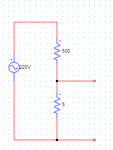kunal123
Advanced Member level 4
Hello,
i am using pic microcontroller to measure ac voltage, for this i refereed below link & voltage sensing section
https://microcontrollerslab.com/ac-voltage-measurement-using-microcontroller/
i want to connect ac voltage source of 220 v 20 ampere, what modification should i do to work well
thanks & regards
i am using pic microcontroller to measure ac voltage, for this i refereed below link & voltage sensing section
https://microcontrollerslab.com/ac-voltage-measurement-using-microcontroller/
i want to connect ac voltage source of 220 v 20 ampere, what modification should i do to work well
thanks & regards

